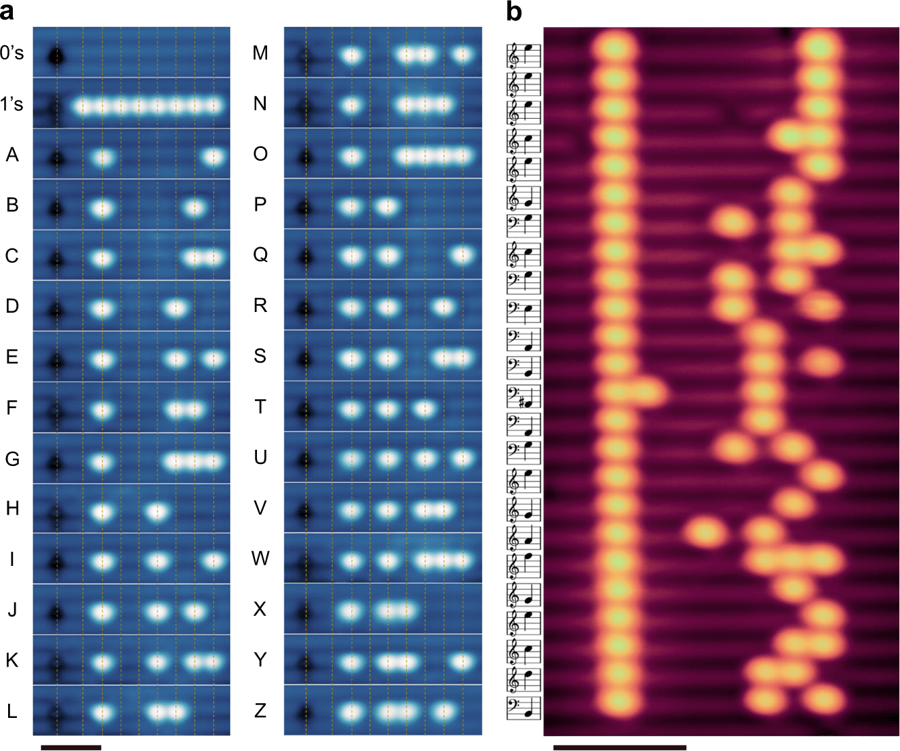
24th July 2018 1000-fold increase in computer storage capacity Scientists at the University of Alberta report a new technique, based on quickly removing or replacing single hydrogen atoms, which can provide a thousand-fold increase in solid-state memory density.
The densest solid-state memory ever created could soon exceed the capabilities of current computer storage devices by 1,000 times, thanks to a new technique scientists at the University of Alberta have perfected. "Essentially, you can take all 45 million songs on iTunes and store them on the surface of one quarter," said Roshan Achal, PhD student in Department of Physics and lead author on the new research. "Five years ago, this wasn't even something we thought possible." His team used the same technology they developed in previous research to build atomic-scale circuits – which allows the quick removal or replacement of single hydrogen atoms. This enables the memory to be rewritable, offering tremendous potential for more efficient solid-state drives. Previous discoveries of atomic-scale computer storage were stable only at extremely low temperatures, but the new memory developed by Achal's team works at real-world temperatures and can withstand normal use. "What is often overlooked in the nanofabrication business is actual transportation to an end-user, which simply was not possible until now given temperature restrictions," explains Achal. "Our memory is stable well above room temperature and precise down to the atom."
The technology has immediate applications for archiving data, according to Achal. Next steps will include boosting the read and write speeds, for even more flexible applications. Achal works with physics professor Robert Wolkow, a pioneer in the field of atomic-scale physics. Wolkow perfected the "nanotip" that allows scientists to manipulate single atoms on a silicon chip – a technology he says has now reached a tipping point. "With this last piece of the puzzle now in hand, atom-scale fabrication will become a commercial reality in the very near future," says Wolkow. His spinoff company, Quantum Silicon Inc., is working to commercialise the process for use in all areas of the technology sector. To demonstrate their new memory, Achal, Wolkow and their fellow scientists encoded the entire alphabet at a density of 138 terabytes per square inch – equivalent to writing 350,000 letters across a grain of rice. For a playful twist, Achal also encoded music reminiscent of video game soundtracks. The research, "Lithography for Robust and Editable Atomic-Scale Silicon Devices and Memories," appears in the current issue of Nature Communications.
Comments »
If you enjoyed this article, please consider sharing it:
|








